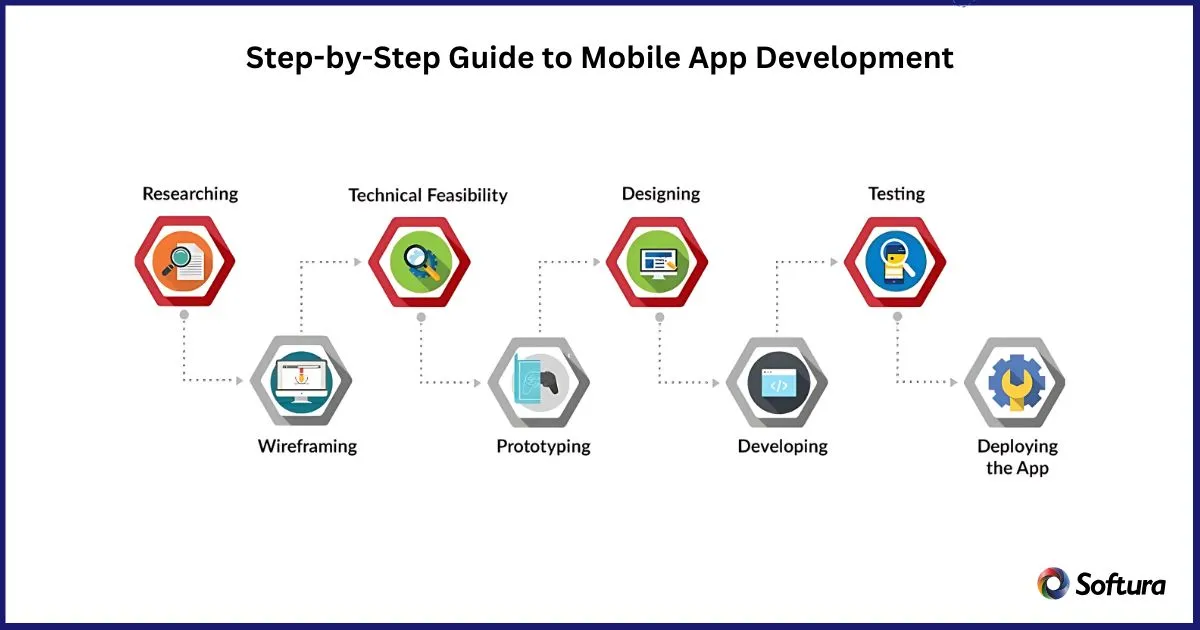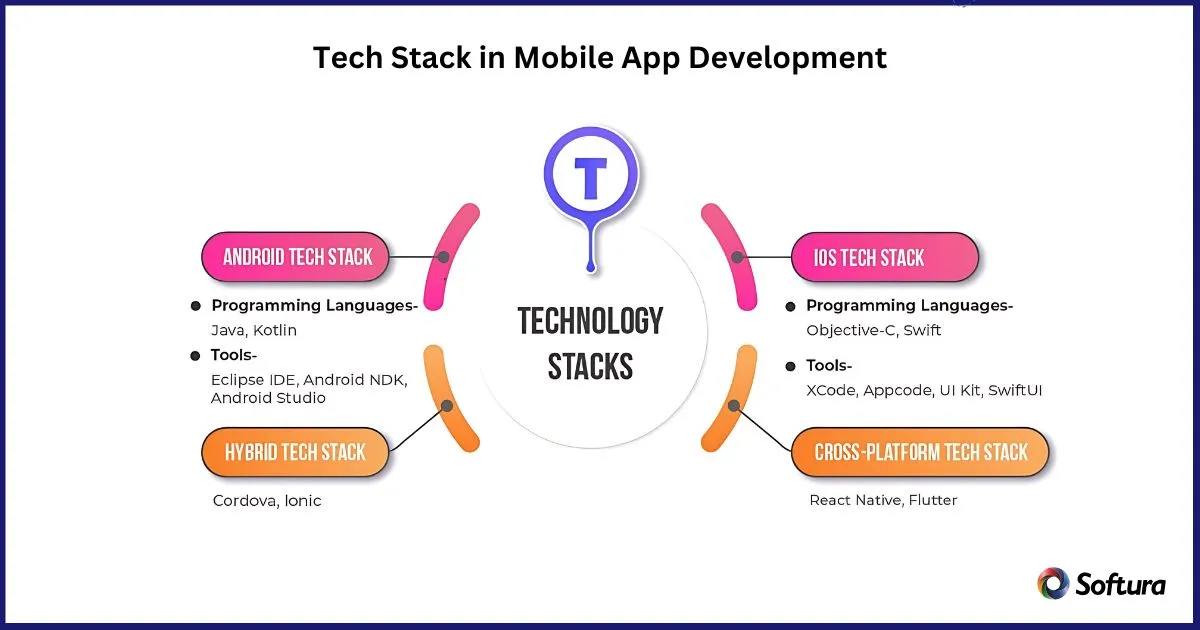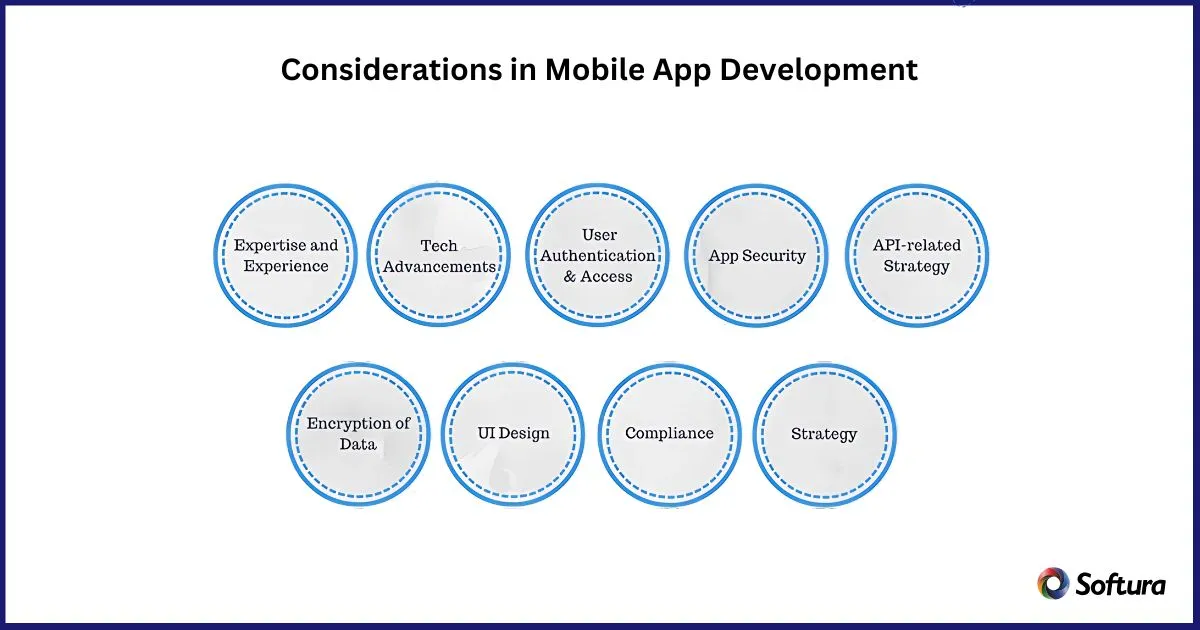"Our integration with the Google Nest smart thermostats through Aidoo Pro represents an unprecedented leap forward for our industry."
- Antonio Mediato, founder and CEO of Airzone.
As we move further into 2025, the landscape of mobile app development continues to expand, offering new opportunities and challenges. This guide aims to provide a comprehensive overview of mobile app development to explore the world of app creation.
Mobile app development refers to the process of designing, building, and launching custom software application development that run on mobile devices. These apps can be native, hybrid, or web-based, each with its unique set of features and functionalities. The development journey encompasses several stages, from ideation and market research to design, coding, testing, and deployment
Idea and Market Research:
Before you develop a mobile app, ensure that you have a good understanding of the the project scope and the target audience. For example, competition research can give you much information about what competitors are doing and how they're making money with similar apps. When the app is ready, this study will help us improve our tactics and get better results.
Like, Uber saw a need in the transportation market for a dependable, on-demand car service. They did market research to find out what urban workers wanted. They found that riders wanted an easy and quick way to get around, which led to the creation of the Uber app.
Planning and Strategy:
In a software requirement specification (SRS) document, write down the project's budget, schedule, and scope while it is still being planned. This paper describes what the software will do, how well it should work, and what technology standards it needs to meet. It's very important to ensure that your idea works technically.
Spotify planned their mobile app with the goal of making it stand out in the crowded market for music streaming apps. They came up with a plan to attract music fans who wanted personalized, on-demand music experiences. This led to features like Discover Weekly and Custom Tracks.
Design and User Experience (UX):
UX research is the first step in making a mobile app. It helps designers figure out what users want, need, and do. This study helps with the product design process, making sure that the look of your app works the way people use it.
Wireframes are made to show how each screen works and how the information is laid out. These go through a lot of UX testing.
Instagram's success is partly due to its focus on great UX and design that is easy to use. With a clean layout and simple access, the app's design puts an emphasis on visual content, making it a fun and easy way to share pictures and videos.

Development:
During the development stage, you start by building a prototype to test your design ideas. Then you move on to the actual app building process. This step lets you find and fix any problems that might come up early on. Only then during the development phase the developers can easily put together the original plans, designs, and lessons learned from the prototypes.
The main goal of WhatsApp's development was to make a fast and effective chat app. As a result, they made a small, cross-platform app that could send messages instantly and with minimal latency, which helped it become very popular.
Testing and Quality Assurance:
Testing a mobile app thoroughly includes checking each move in the app to see that it works right. At this stage, you'll look for different kinds of possible failures, such as,
Before Slack went live, it was put through a lot of tests to make sure it worked well for team collaboration. They used beta testing with real users to find and fix bugs, which made the tool for teams' communication stable and effective.
Deployment and Launch:
After the app has been built and tested, it is put on app stores like the Apple App Store or the Google Play Store. Getting the app approved by the store and making sure it meets their requirements are both parts of this process. If you're making an app for a particular industry with a lot of specifications, you should also make sure it meets them.
Before releasing TikTok on the market, the people who made it ensured it was compatible with all app stores and fit each requirement area. This method of careful planning and translation made it a worldwide hit.
Marketing and Promotion:
Develop a marketing plan to promote your app and attract users. This may include social media marketing, content marketing, influencer collaborations, and paid advertising.
Airbnb's marketing strategy focused on storytelling and user experiences. They highlighted real stories of hosts and travellers, emphasizing the unique experiences offered through their platform, which helped attract a large user base and establish brand loyalty.
Maintenance and Updates:
In the maintenance stage, it's crucial to constantly ensure the app's health and usability. This involves addressing unexpected issues with the app’s performance, thinking of new features, and maintaining the app’s relevance as mobile device hardware and software evolve.
Netflix continually updates its app to enhance user experience and adapt to changing viewer habits. They regularly roll out new features, like personalized recommendations and offline viewing options, and update the app for compatibility with the latest devices and operating systems.
Onboard dedicated Offshore App Developers
Develop Mobile application and integrate it into your business processes with Softura's dedicated offshore mobile app developers!
"Our integration with the Google Nest smart thermostats through Aidoo Pro represents an unprecedented leap forward for our industry."
- Antonio Mediato, founder and CEO of Airzone.
Choosing the right mobile app development platform is a big decision that affects how the app looks, how it works, and how the users feel about it.
The choice of platform relies on a number of things, such as the audience you want to reach, the tools you want, your budget, and how much time you have.
We'll talk about the different kinds of mobile app development platforms and the pros and cons of each
Native App Development Platforms:
iOS (Apple):Developers use Swift or Objective-C along with Apple's Xcode IDE.
Android (Google): Kotlin or Java is used with Android Studio.
Cross-Platform Development
React Native: Allows development using JavaScript and React, sharing codebase between iOS and Android.
Flutter (Google): Uses the Dart programming language and provides its own widgets.
Hybrid App Development Platforms:
Cordova/PhoneGap: Wraps HTML, CSS, and JavaScript code into a native container.
Web-Based Platforms:
Progressive Web Apps (PWAs): Web apps that offer a native-like experience using modern web capabilities.
Mobile App Development Frameworks:
Xamarin (Microsoft): Uses C# and .NET to create apps for iOS, Android, and Windows.
Game Development Platforms:.
"By analyzing the data from our connected lights, devices and systems, our goal is to create additional value for our customers through data-enabled services that unlock new capabilities and experiences."
- Harsh Chitale, leader of Philips Lighting’s Professional Business.

When building a mobile app, the technology stack is made up of the programming languages, libraries, and tools that are used to create and keep the app running. The tech stack you choose is very important because it affects how the app works, how it can be expanded, how well it runs, and how much it costs to maintain.
Let's look at some real-life examples of the most important parts of a tech stack in mobile app development:
Native Apps: For apps that are platform-specific, developers use Swift or Objective-C for iOS and Kotlin or Java for Android.
Cross-Platform Apps: Frameworks like React Native or Flutter are used for cross-platform app development.
Server-Side Languages: Common choices include Node.js, Ruby, Python, and PHP.
Database Management: Popular databases are MySQL, PostgreSQL, MongoDB, and Firebase.
Integrated Development Environments (IDEs): Xcode for iOS and Android Studio for Android are widely used.
Version Control Systems: Git is a popular choice for version control.
Mobile App Developement Testing Tools:
Testing frameworks like Espresso for Android and XCTest for iOS are used for automated testing.
Deployment and Continuous Integration Tools:
Tools like Jenkins and Fastlane automate the deployment process.
Cloud Services and Backend-as-a-Service (BaaS):
AWS, Google Cloud, and Azure offer cloud services for storage, computing, and more.
APIs and Libraries:
APIs for third-party integrations, such as payment gateways or social media sharing.
"By analyzing the data from our connected lights, devices and systems, our goal is to create additional value for our customers through data-enabled services that unlock new capabilities and experiences."
- Harsh Chitale, leader of Philips Lighting’s Professional Business.

Budget and Allocation of Resources: Pay attention to your budget and make good use of your resources. Think about how much it costs to create, plan, test, sell, and maintain.
Privacy and Security for Users: Prioritize data security and privacy for users first. Protect private data and follow rules like GDPR to ensure the standard security protocols are followed.
Adaptability and Scalability: Make sure your app can be scaled with mmore features in the future and can handle more users as they sign up.
"By analyzing the data from our connected lights, devices and systems, our goal is to create additional value for our customers through data-enabled services that unlock new capabilities and experiences."
- Harsh Chitale, leader of Philips Lighting’s Professional Business.
In 2025, mobile app development is still a trending domain that is constantly evolving. Organizations can make groundbreaking, useful, and important mobile apps that meet the changing needs of users and the business world by following this full guide and keeping up with new technologies and trends.
Softura can play a crucial role in this journey by providing professional mobile app development services. These services can help companies make their new app ideas come to life by using professional knowledge and cutting-edge solutions.
Are you ready for your next project?
Unlock your company's full potential with our comprehensive Software development services. Contact our experts today to discuss how we can drive your success together.